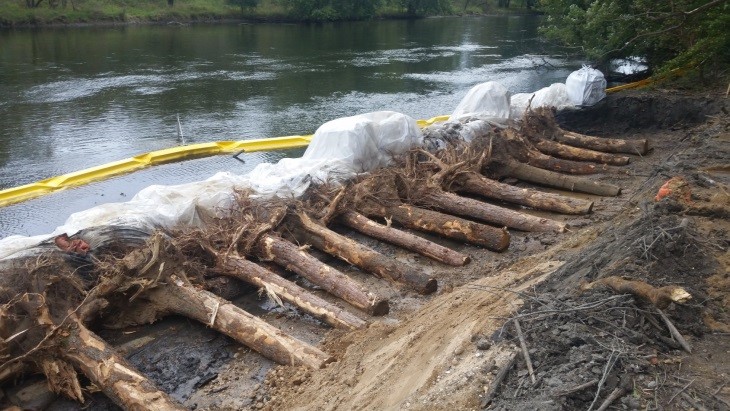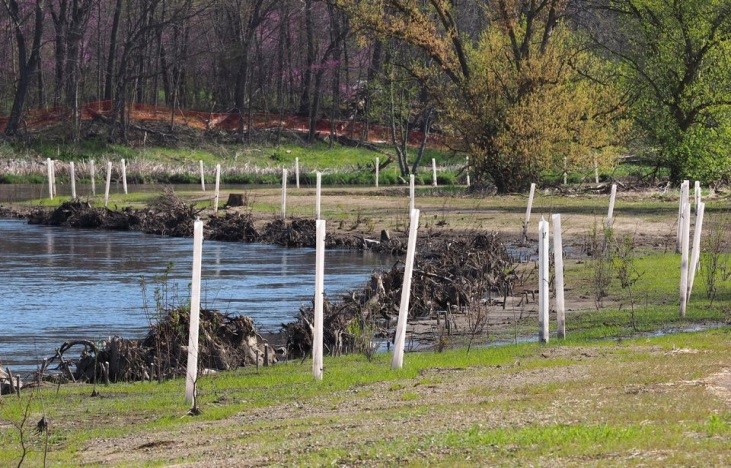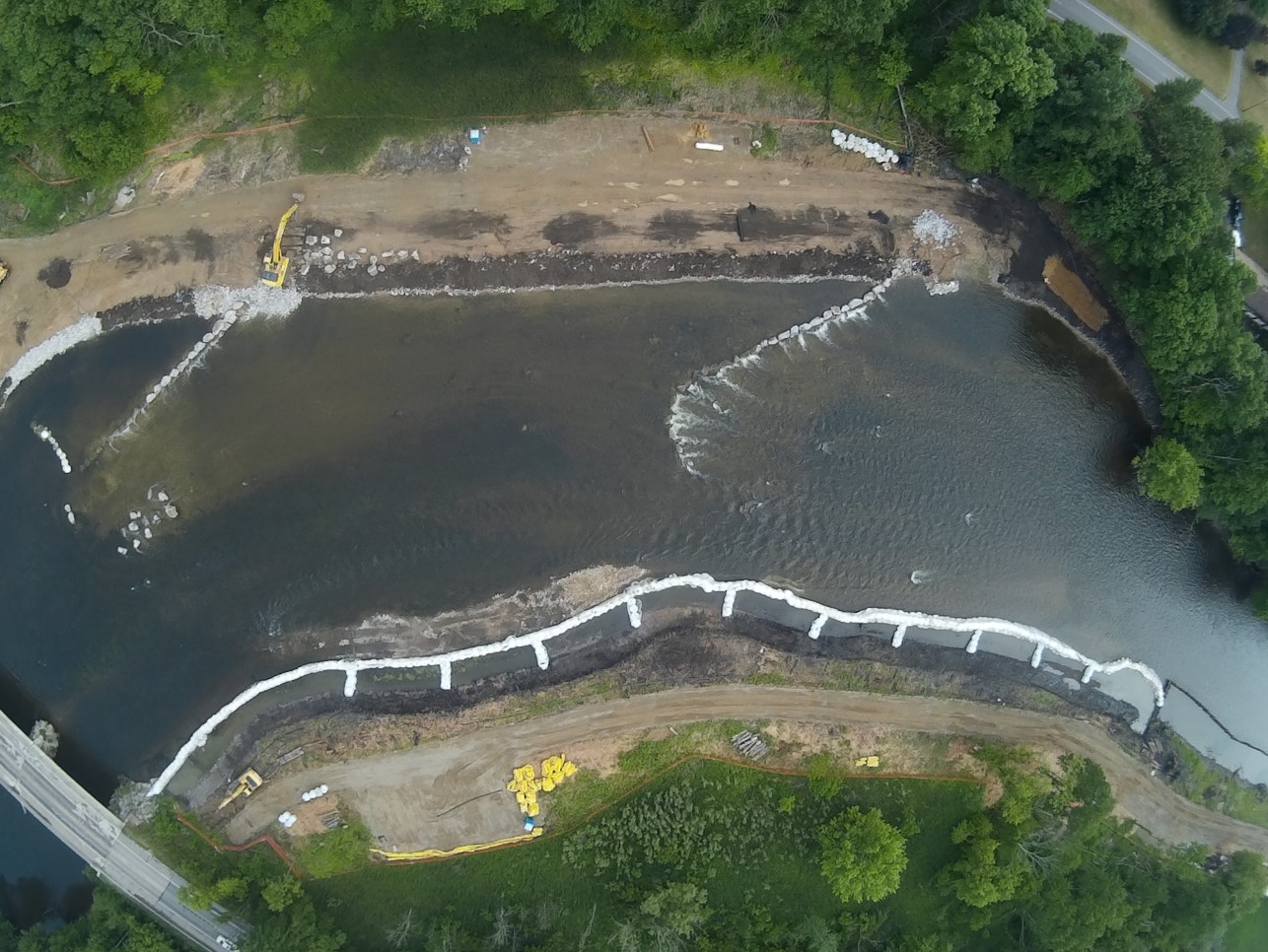This spring, Envirocon kicked-off a new education program to share knowledge gained at project sites and allow our Technical Services group to highlight innovative successes across the company. The first “Lunch & Learn” session discussed Envirocon’s recent Otsego Dam Township Time Critical Removal Action (TCRA) project and the ecological restoration techniques implemented. Presented by Operations Director Pat Davidson and Project Engineer Jedd Smith, the 30-minute session was open to all Envirocon employees and offered an educational look at the methods implemented onsite that contributed to this effective ecological restoration task following remediation of soil and sediment from the river and riverbanks.
The Otsego site was designated a Superfund site in 1990, with PCB contamination in the sediment and riverbank soils along approximately 80 miles of the Kalamazoo River. Envirocon’s scope of work focused on 3.4 miles of riverbank remediation over 23 months, and included construction of a sandbag cofferdam; soil and sediment excavation; installation of root wads, coir fabric, and riprap; backfill and placement of topsoil, including final grading; and final revegetation including seeding, mulch application, and planting of live stakes, trees, and shrubs. The project site came with a unique set of challenges, such as limited work space along the riverbank; construction of narrow access roads in the flood plains; and multiple high-water events.

Root wads installed at subgrade, ready for backfill.

Root wad area fully restored.
Envirocon used several forms of natural erosion control for restoration: root wads, coir fabric, riprap, and J-hook vanes. The Otsego presentation focused on root wads and J-hook restoration. Root wads consist of a three- to five-foot root ball with an eight- to ten-foot trunk. These were sourced locally from the Michigan Department of Natural Resources as part of a thinning project. Additional root wads were collected as part of a clean-up effort after a nearby area was impacted by a tornado. Root wads were installed on the cut bank (outside edge) of the riverbed to help decrease bank erosion against the swiftest current within the river cross-section. After the root wads were properly installed with a footer log and retention boulder for stability, the bank was regraded with clean fill, topsoil placement, and revegetation. The resulting riverbank optimizes the habitat for native fish and amphibians, while minimizing bank erosion and sediment deposition.
Thalwegs were used at this site to increase the effectiveness of the J-hooks, and ultimately shift the river back to its historical location. A thalweg is an excavation in the riverbed; precise excavation of the thalweg was necessary to decrease river depth and redirect the river into the historical river channel. J-hooks are boulders placed in the river to re-direct the primary river flow away from the river banks to decrease cutback erosion. The Otsego project used approximately 150 three- to five-foot angular boulders to complete these engineered J-hook structures. Exact placement and grade of boulders was critical to a successful installation for optimum river flow.

Downstream J-hook complete; upstream J-hook under construction
Envirocon’s completion of the Otsego Project later this year will mark another successfully executed project in our remediation and ecological restoration portfolios. Our team continues to apply lessons learned on each new work site, increasing our knowledge base and efficient project execution. Our newly implemented “Lunch & Learn” series offers employees an exciting insider view of the technical development of these methods.